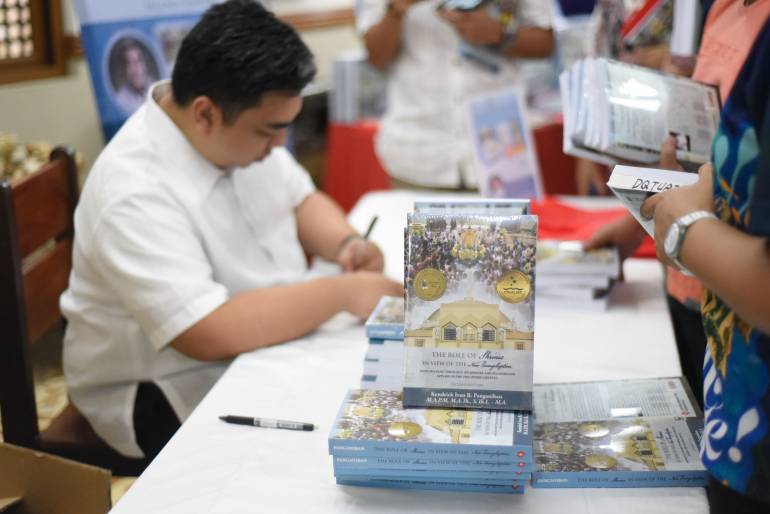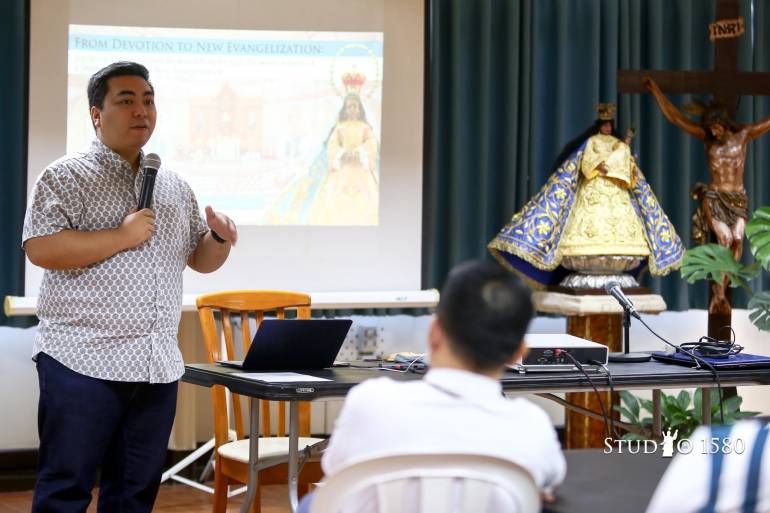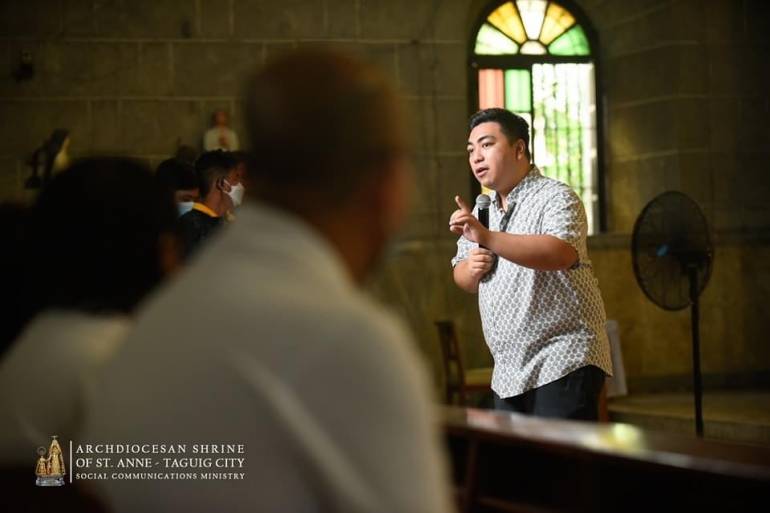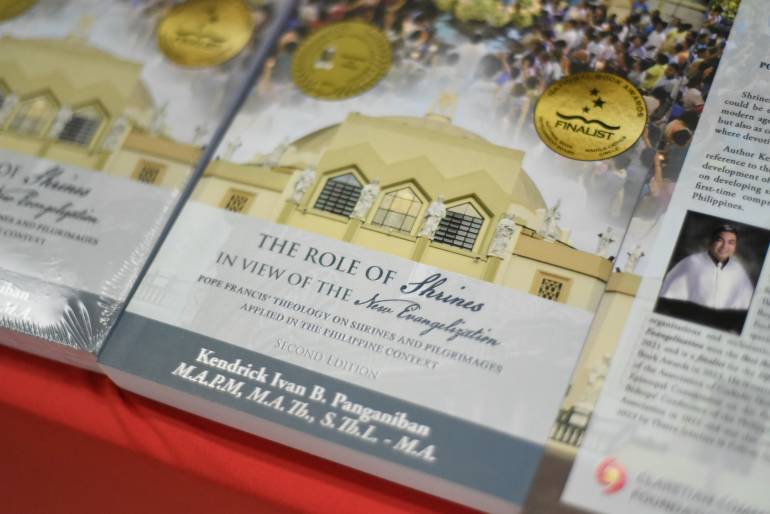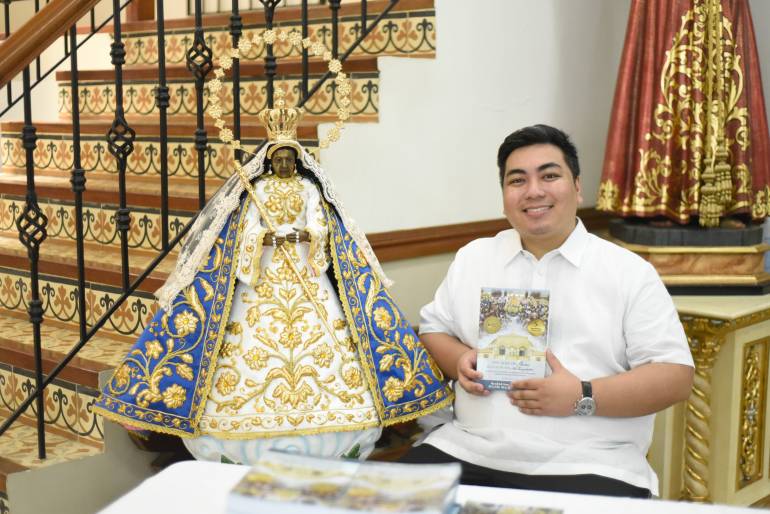How a Filipino lay theologian helps shrines become ‘powerhouses of the New Evangelization'
Ivan Panganiban is a lay theologian who has promoted “Shrine Ministry," to encourage lay people's involvement in evangelization.
Some churches are given particular recognition because of the unique devotion being fostered in their region and the number of pilgrims they attract. These churches considered “the best of the best of Catholic churches in a diocese in the country,” are designated as shrines.
With shrines regularly welcoming hundreds, if not thousands, of pilgrims, these churches have become “powerhouses of the New Evangelization.” They are not only reflective spaces but also popular tourist spots for families or travel agencies.
As they grow in popularity among travelers, shrines have been tasked with one important duty of evangelization: to ensure that every tourist that goes to their church is transformed into a fervent devotee.
In the Catholic-dominated Philippines, one man works hard to ensure that shrines are not solely for sightseeing but “settings for conversion, spirituality, and promise.” Each visitor should experience a deeply personal moment with God and the patron being venerated when coming to these special places of worship.
Bro. Ivan Panganiban, a Filipino lay Catholic theologian and author, currently serves as the Lay-Secretary and Research and Documentation Committee Head of the Association of Catholic Shrines and Pilgrimages of the Philippines (ACSP).
Since his induction to the role in 2022, he has dedicated himself to the mission of updating every shrine in the Philippines on becoming more active in their faith and promoting devotion to Christ, the Virgin Mary, and the saints.
Becoming a lay theologian
Born and raised in the religious town of Hagonoy in the province of Bulacan, Bro. Ivan understood what it meant to be a steadfast Catholic even in the earliest days of his youth. His town is home to a national shrine, one dedicated to St. Anne, the mother of the Blessed Virgin Mary.
Bro. Ivan entered the seminary when he was a teenager. But instead of finding his way into priestly life, he went down the path of becoming a lay theologian. For him, knowledge of the ecclesiastical sciences must not be limited to the clergy but also to lay people, both single and married.
“People are used to theologians or those learned through the study of the Catholic faith being either priests, religious brothers, or nuns. But for me, it became important to let people know that lay people who are hardworking enough or gifted enough could be experts in Theology, Liturgy, Canon Law, and Scripture,” he explained.
In 2022, Bro. Ivan finished a Pontifical Licentiate in Sacred Theology, majoring in Church History at the University of Santo Tomás. He is currently finishing his Doctorate in Sacred Theology at the same university.
Highlighting ‘Shrine Ministries’
In his capacity as ACSP’s Lay Secretary, a body under the Episcopal Commission on Migrants and Itinerant People of the Catholic Bishops’ Conference of the Philippines (CBCP), Bro. Ivan conducts various formation seminars and lectures in schools and shrines across the country to introduce the concept of what Pope Francis calls the “Shrine Ministry.”
“This encourages the involvement of lay people in the continuity of the program of evangelization and the maximal use of the popular piety inherent in the shrine to allow people to be involved in the work of the Church,” he said.
As challenging as it may be, Bro. Ivan pointed out that the ACSP tries its best to personally visit shrines all over the archipelago to provide its rectors and lay members with proper formation programs.
“When we were asked to go to Ilocos, we went. When we were asked to go to Cagayan de Oro, we went. When we were asked to go to Albay, we went. The challenge is maintaining the work on shrines as a national program, and the larger work is to imbibe the spirit of solidarity and united promotion among the shrines,” he explained.
ACSP’s efforts are starting to bear fruit. Numerous shrines in the Philippines have created their own Shrine ministries. Some shrines even collaborated with others, usually involving visits of their saint’s pilgrim images or relics. evangelization in a shrine may become a path that is both appreciated and transformative for both the lay faithful and our priests.”
Promoting shrines in different forms
Inspired by his learnings and personal interaction with shrines, Bro. Ivan wrote the book “The Role of Shrine in the View of the New Evangelization.” In it, he breaks down seven aspects of a shrine in the Church today to fulfill their roles of becoming “dynamic centers of continuing evangelization.”
“The shrines are centers of Worship, Proclamation and Witnessing, Devotion, Catechesis, Spiritual Ecumenism, Charitable Work, and Culture,” he enumerated.
“There is a hope that these churches become centers of the faith in a world that is constrained by the pandemic and of movements such as secularism, agnosticism, atheism, and relativism.”
His book won in the Liturgy Category of the 15th Cardinal Sin Catholic Book Awards as the first one to comprehensively document shrines across the Philippines.
Furthermore, Bro. Ivan has another advocacy project related to shrines that started even before his book and ACSP position. He crafts coats of arms and emblems through DOMVS AVREA Ecclesiastical Designs, showcasing both his creativity and knowledge of the principles of ecclesiastical heraldry.
“With much determination and trust, we have made more than 300 coats of arms in 40 dioceses across the country,” he said.
Bringing ordained and lay people together
Every shrine is assigned a rector and sometimes even some assistant priests as well. However, they cannot do all the work by themselves, as shrines have an extraordinary character that poses a challenge to their work in promoting devotion.
Bro. Ivan emphasizes the need for collaboration between the clergy and lay people: “There have been times when there have been priests who do not understand the traditions of the faithful and would go about doing or allowing only the bare minimum of activities. But a shrine is a church that has an extraordinary character, which should challenge priests to [work harder] in promoting devotion and become devotees themselves.”
“In that way, the promotion of devotion and the work of evangelization in a shrine may become a path that is both appreciated and transformative for both the lay faithful and our priests.”
Radio Veritas Asia (RVA), a media platform of the Catholic Church, aims to share Christ. RVA started in 1969 as a continental Catholic radio station to serve Asian countries in their respective local language, thus earning the tag “the Voice of Asian Christianity.” Responding to the emerging context, RVA embraced media platforms to connect with the global Asian audience via its 21 language websites and various social media platforms.





